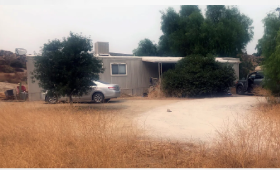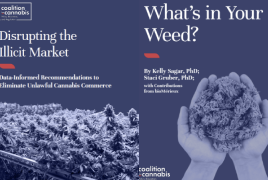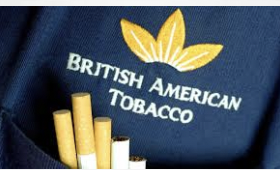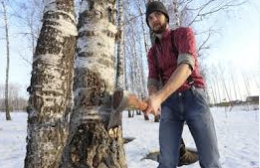Thanks to
Dear community,
Recently the Hoopa Valley Tribe came out in support of Measure A. Vice-Chairman Colegrove noted that the Tribe was particularly supportive of provisions that stop further ‘mega-grows’ and that set caps on future acreage and permits. Further, appreciation was expressed for the Measure’s goals to reduce the cannabis footprint, promote healthy environments and rural communities, and ensure public involvement. The Tribe “wholeheartedly’ supports Measure A because, as he says, “clean, healthy, and abundant water supplies are at the core of our traditional values.”
For millennia, the health of the people has relied on a healthy environment to sustain themselves and the wildlife. We have come to realize that promotion and support of the environment is not just an important Tribal goal, it is a paramount custom—a way of doing things. The Tribal environmentalism is not conditional, or convenient when personal economic considerations are not in the way. Their concern for how cannabis cultivation affects all watersheds, streams, fish, forests — tan oaks—, and people is deep and profound.
While the environmental group Friends of the Eel River (FOER) cannot take a position on Measure A, it notes: “The initiative offers several ways to improve cannabis cultivation regulations by bolstering existing regulations on cannabis operations to further reduce environmental impacts, imposing new caps on the number of grows, and limiting cultivation area.” The FOER further highlights Measure A’s provision on new wells: “One important feature is the requirement of hydrologic studies by a qualified expert to demonstrate that groundwater use will not reduce surface water flows. This is particularly important given the lack of subterranean stream designations in the Eel watershed and the strong connectivity between groundwater and surface water in some regions.” The FOER is aligned with Measure A’s improved inspections and enforcement: “We strongly urge Humboldt County to improve their regulatory efforts to meet their existing standards, for example to complete all necessary in-person site inspections each year.”
The Redwood Region Audubon Society also endorses Measure A, in advocating “—for the protection of birds and wildlife by supporting local conservation efforts to protect wildlife and their habitat”. Measure A’s provision to stop the County from issuing 2500 more permits would protect wildlife habitats that could have been impacted by those new grows.
Friends of Elk River endorses Measure A in advancing its goal for “a healthy forest and a clean river, with the restoration of beneficial uses– good for people, good for fish– “. Its mission is consistent with Measure A: “While Friends of Elk River continues to engage the state’s flawed regulatory process, —we are expanding towards building community awareness of our watershed and its history.” Measure A has been endorsed as well by Salmon Forever, which is “dedicated to encouraging enlightened public debate on issues related to forests, watersheds and the protection of beneficial uses of water.”
Measure A aims at protecting watersheds from further harm caused by cannabis cultivation, particularly large mega grows. Current unscientific allocations of the Planning Department’s 3500 permits to the county’s 12 watersheds were mandated by County Resolution 18-43 to be subjected to yearly public hearings, with state agency input in order to quantify impacts and revise numbers accordingly. The Planning Department, however, has not held a hearing in 6 years. It is not surprising, therefore, that given Planning’s unwillingness to allow public engagement, the Department’s interpretation of Measure A would be so prejudicial and biased in its analysis of the Initiative. It is clear that the many factual errors, mischaracterizations, and misinterpretations in the Department’s ‘Humboldt Cannabis Reform Initiative Analysis and Recommendations’ (March 7, 2023) were intended to influence politicians and others to oppose Measure A. This is exactly what has happened.
The flagrant falsehoods perpetrated by Planning’s ‘Analysis’ obviously fit right in with the opposition’s strategy to accuse the initiative of hamstringing the cannabis industry with vague and confusing language, rather than tackle the merits of preventing another 2500 cultivation permits, or limiting new ones to 10,000 sq ft. Planning’s doomsday scenario, coupled with economic threats, has intimated local politicians into opposing Measure A, a feat made easier because few have even read the initiative.
The ‘Analysis’ also promulgated the false narratives that populate the opposition’s arguments, and which have been thoroughly rebutted: Solar, water storage, bathrooms, drying sheds, tourism and other non-cultivation permits are, in fact, all permissible under Measure A, which is laser-focused on regulating cultivation expansion. Otherwise, Measure A hardly touches current growers.
Proponents insisted that the ‘Analysis’ be withdrawn because it is inappropriate for the County to use tax dollars to take sides in this fight, and because the County is required to be thorough, accurate, and fair, which it has most certainly not been. (see: Initiative’s attorney responding to misleading and inaccurate County ‘analysis’ of the Initiative. April 20, 2023
https://cannabisinitiative.org/initiative/articles/ ). The County refused.
Most ominously looming on the horizon is a boom cannabis economy, blinded by greed to environmental and neighborhood impacts, aiming for the national and international markets when federal legalization happens. Without Measure A, current grows could triple in number, from 1200 to 3500, and range in size up to 2 and more acres of industrial activity and traffic, habitat fragmentation, mountains of plastic, and slowly leaching nitrogenous inputs, transforming terroir into terror.
Measure A stops that deadly spiral. 10,000 sq ft grows foster “Homestead grows” that produce low-impact, high value, diverse products.
Measure A is forward-looking: it establishes safeguards that mitigate anticipated impacts to the land and neighbors, while promoting the Humboldt sun-grown brand, our Appellation, or terroir. Along with 1.0 and 2.0 Cannabis Ordinances, Measure A is a covenant with quality: for our community and for the consumer.
Support of Measure A by the Hoopa Valley Tribe and environmental groups is much appreciated and should inspire other unconditional environmentalists in their efforts to promote healthy watersheds, rivers, wildlife, and rural communities. We can all join in these efforts by voting YES on Measure A.
Mark Thurmond, DVM, PhD, Co-sponsor Measure A
Kneeland, CA
Ken Miller, MD
McKinleyville, CA
Source:



















